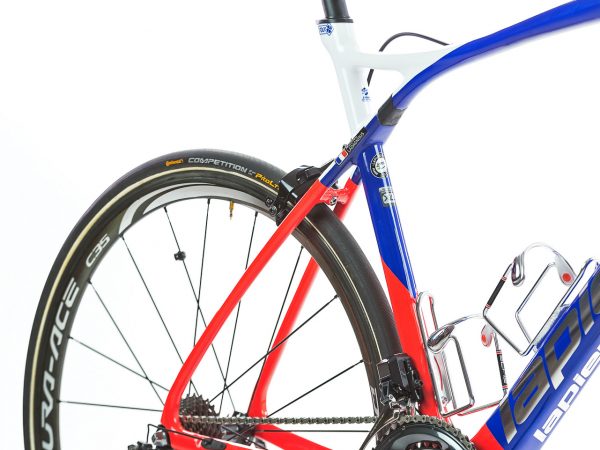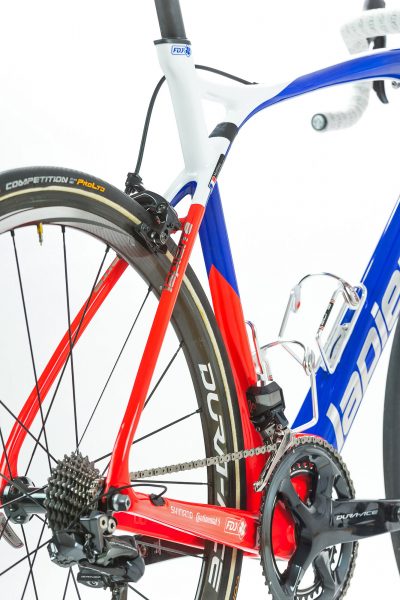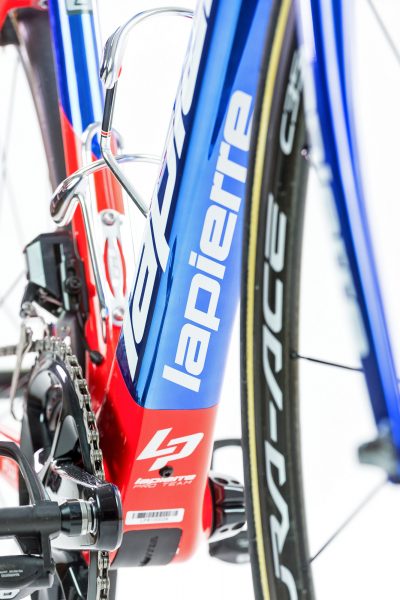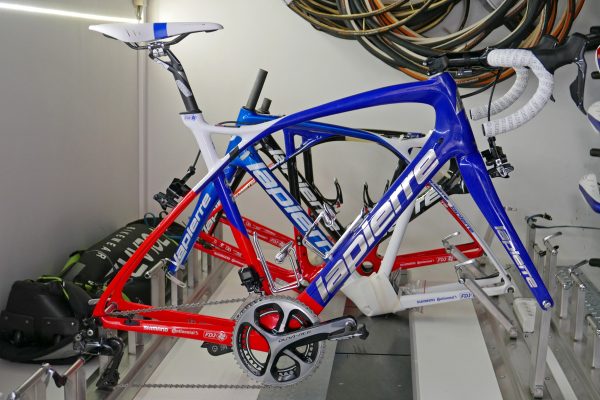At an FDJ team introduction ahead of this weekend’s Paris-Roubaix, French bike maker Lapierre unveiled their new Pulsium endurance road bike that the team will ride to take on the brutal pavé of the cobbled Spring Classic this coming weekend. The bike was designed with rough road racing in mind, and takes the basic SAT elastomer suspension concept from the previous generation Pulsium and updates it to a level of lightweight race-ready performance previously reserved for the Xelius SL race bike range. We found the bike lurking in the back of the team truck and on the roof of a team car to get a closer look…
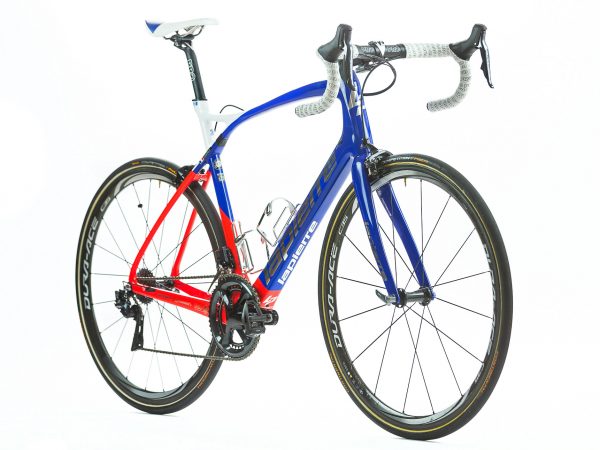
Lapierre and FDJ worked closely on the new Pulsium on the difficult task of finding the best balance between the contradictory concepts of comfort and stiffness that define an endurance race bike, the ultimate goal being to reduce rider fatigue and soak up enough vibration to keep the wheels firmly planted to the road for effective power transfer on even the most extreme surfaces.
Lapierre like to say that FDJ keep them on their feet. And while French road teams have a bit of a reputation for being resistant to change, FDJ has been a team that has shown a lot of interest in new tech, developing & testing bike with Lapierre but also working with Shimano to develop new groupsets and especially the new Dura-Ace power meter crankset.
The heart of the bike is a simplified 1-piece SAT (Shock Absorption Technology) elastomer that interrupts the extended seatstays between the seattube and the top tube. The Xelius uses a similar looking frame profile that extends the seatstays around the seattube without touching it to allow for flex & vibration damping in the stays. However the Pulsium connects the seatstays directly to the seattube in a more conventional fashion, but allows flex around the seat cluster where the front & rear triangles can move independently enough to soak up even larger impacts and vibrations.
The new bike now meets the performance needs of the top-level professional racers with much improved lateral stiffness, while still delivering the vibration damping character that will help them reach the velodrome finish fresh enough to contest the final sprint. FDJ will race the new bike in this model year 2018 Pulsium Ultimate FDJ tricolore paint scheme with fully chromed out logos.
Like many of the modern crop of endurance race bikes, the new Pulsium gets relatively slender seatstays & toptube, that are then complemented by a massive downtube, BB & chainstays (what Lapierre calls Powerbox tech) to deliver efficient power transfer. The bike also includes an updated fork and steepened headtube angle that doesn’t seem to offer much more in the way of comfort, but does reduce lateral flex for improved tracking on rough terrain and more race-ready offset for responsive steering. It also gets Lapierre’s modular internal routing & recent Di2 battery trap door to get the bike weight low (and easy to access) at the BB.
The new Pulsium for now has been shown in a single bolt, rim brake only version for the FDJ team, but we anticipate that a new disc brake version could be close on its heels, possibly as early as this summer.


